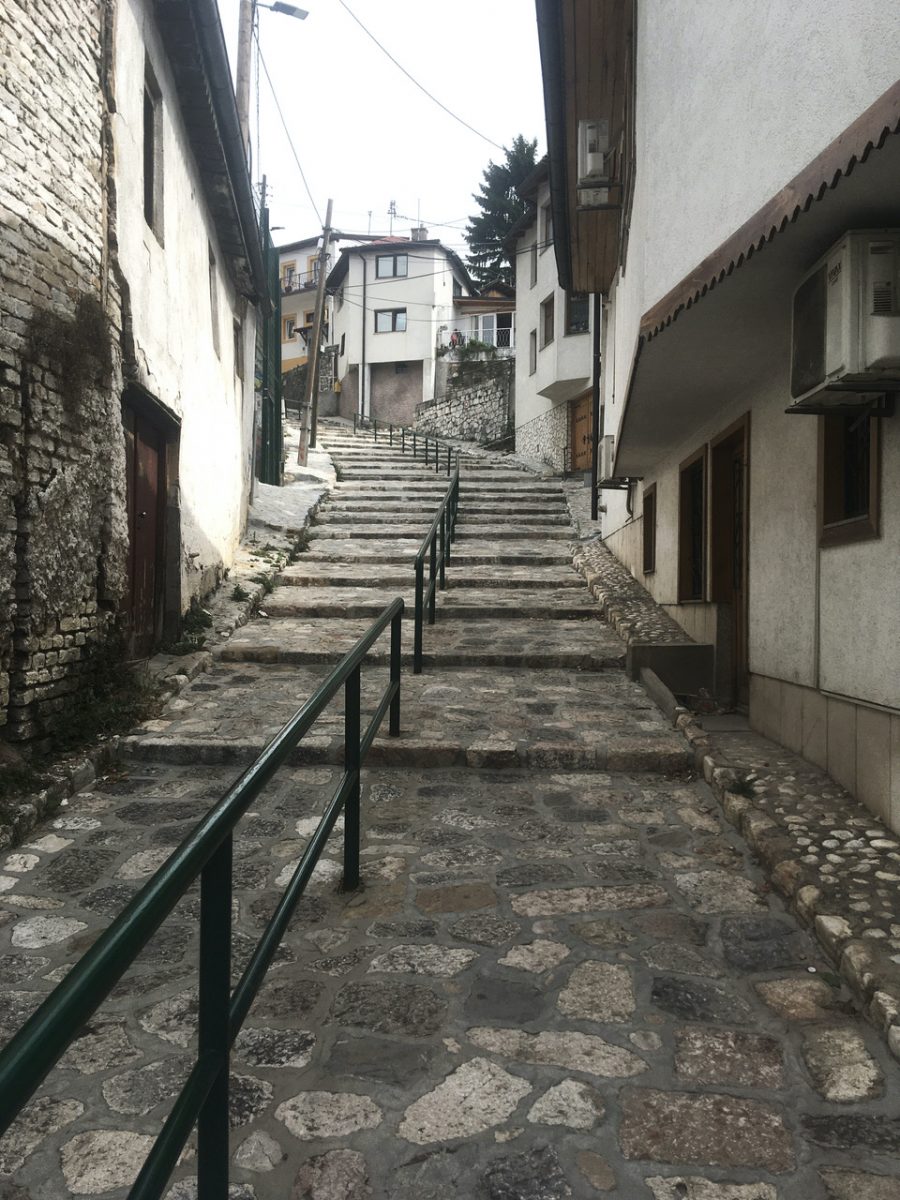A Reimagining of the Idea of the Archipelago within Critical Urban Theory
Eldar Hajdarević

A main street (the sokak Nadmlini) in the mahala of Kučuk Kjatib in Sarajevo, Eldar Hajdarević, 2021
The mahala is a South-Eastern European term for the residential quarters used in the Islamic
administration and the structuring of former Ottoman cities in the Balkans. Containing groups of
densely attached courtyard houses placed around mosques, the mahale (pl.) were organised as self-
administered and ethnically demarcated neighbourhoods, constituting the residential morphology of these cities.
The thesis explores the concept of the mahala through the example of Sarajevo, one of the few European cities where this type is still prevalent but is mostly neglected in its former administrative and social role as an independent neighbourhood. As its status remains rather unclear, the analysis aims to answer the following questions: What does the mahala represent in architectural discourse, and what potential does it offer for the contemporary organisation of collective urban life?
Through interdisciplinary methods of critical urban theory, historical investigations, the retracing of maps, a typological history, and a historiography of Yugoslav discourse, as well as field analyses, the mahala is re-evaluated in its multiple facets as a political, social and architectural form. In order to do this, the phenomenon of the independent neighbourhood unit is abstracted to the conceptual figure of an island, which in its multiplicity is composed of an archipelago constituting the city. This is an idea that has been discussed in multiple models as an alternative to capitalist urbanisation from the second half of the twentieth century onwards, and thus it precisely positions the mahala in current architectural and urban discourse.
To articulate the concept, crucial elements and principles are thus drawn deliberately from nissology, the interdisciplinary field of investigation of literal geographic islands. The organisation of the collective residential life of the mahala is, in this sense, evaluated and rethought through nissological relational aspects of local interiority, the island’s ambivalent boundary conditions as well as its infrastructural connectivity to its surroundings.
As a consequence, the thesis reveals that the mahala, interpreted as an island form, is central to the political, social and spatial conditions of Sarajevo. It exposes how the mahala was implemented as an apparatus for colonial territorial governance (an imperial archipelago), abstracted and integrated within the urbanisation accompanying upcoming modernity (a process referred to here as “un-islanding”) and, finally, embedded as well as reclaimed in the contemporary capitalist urban status quo (referred to as the contrasting condition of a “sea”).
In doing so, the investigation exhibits both the dangers and the potential of the mahala island, in history as well as in its contemporary appropriation. The mahala is thus exposed as a powerful device by which to read historical processes and highlight the ambivalence inherent in the idea, as well as in Sarajevo’s eclectic history.
With this in mind, the thesis concludes by establishing a summarised spectrum of meanings of the
mahala island throughout its history and appropriations and offers three proposals for a
contemporary democratic acquisition of the concept of local neighbourhoods, arguing for territorial autonomy, where localised groups can claim space and set up rules; for relational infrastructure that enables solidarity and democratic exchange between different units, and for institutional recognition that protects the islands from erasure.
Architecture is imagined here not only as a form-making tool, but also as an apparatus for urban multiplicity, justice and collective reinvention that is delicately inserted into the ambivalence of contemporary capitalism.
The idea of this imagined contemporary mahala is thus understood as the concept of a decolonised architectural type, as explained below: a type based on the empowerment of bottom-up local communities and organised in self-administered and self-sufficient neighbourhood units. Composed as a new democratic archipelago, it could oppose the prevailing “sea” of deregulated capitalist tendencies that are mostly oriented towards private profit and the commodification of land.
However, it is an imagined state. This decolonised mahala emerges, if at all, in only a small number of limited concepts and situations, clearly detached from the original type and its spatial appearance. Its forced reintroduction through the sheer implementation or interpretation of its concept in contemporary architecture turns out to be nothing more than patronising and unrealistic.
The concluding argument of the thesis is, therefore, rather than categorically defining or seeking new implementations of the mahala, to aim for an understanding of the existing type, the material mahala structure in Sarajevo, as an open and challenging form, a non deterministic space, useful for staging experiments, for negotiating the way it is used and for dealing with ambiguity.